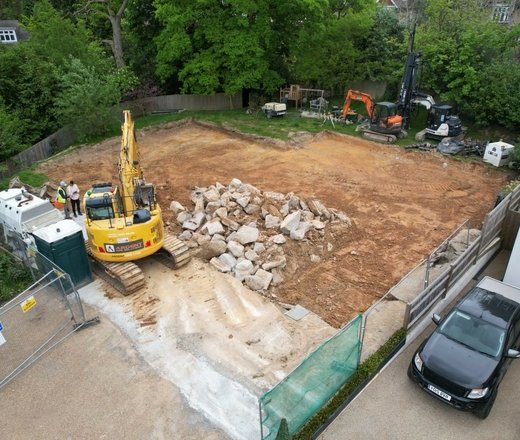Although common across many parts of the world, multi-generational living never quite seemed to catch on in the UK. However, according to research from the National House Building Council, this state of affairs is changing.

Driven at least partly by years of rising sold property prices, the government-led sell-off of much of the country’s stock of council houses and a slowdown in the building of new homes, more and more families are starting to consider the possibility of multi-generational living. For many, this means more than having a young adult child “boomerang” back home after university or an aged parent move into the spare room.

If circumstances and finances mean that you are considering joining those who’ve already embraced multi-generational living, what do you need to think about? Whether you anticipate altering or converting your existing dwelling or buying a new property, we look at the most important considerations.
1. The legal bit
It’s as well to begin with what has the potential to cost you the most money if you get it wrong. This is the legal side of matters. Multi-generational living can take home ownership some way beyond the most conventional situations of a single adult owning a property or of a couple owning one as joint tenants or tenants in common. Once you add additional adults into the mix, you also add potential additional financial obligations and issues. These can take several forms:
Council tax: while you probably realise that going from one adult to two in the same property removes your entitlement to the single person council tax demand, are you aware that adding an annexe to your property may result in the creation of an additional council tax liability? Whether or not the new dwelling is assessed as liable for its own council tax will depend partly on whether it offers a genuinely independent living space and partly on the approach taken by your local authority. The main point to take away when it comes to council tax is never to assume anything. Accrued unpaid council tax can quickly result in CCJs with unhappy consequences for the affected individuals’ credit records.
Loans, investments and gifts: pinning down the exact nature of funds injected into a property purchase or conversion is crucial. At some point or other, someone making a loan or investment will expect a return. Conversely, someone making a gift will not. Misunderstandings are possible in even the nicest of families and it is always best to set out financial arrangements in writing. In many cases, it will be sensible to use a solicitor, especially if potentially competing interests are involved. For example, if Sibling A joins together with Parent X to buy a property, where does this leave Sibling B who may, in due course, be expecting to inherit a share of Parent X’s estate?
Deprivation of assets: increasingly relevant from the perspective of later-life care, it is as well to be aware that local authorities are increasingly alert to anyone divesting themselves of their assets and subsequently seeking financial assistance for social care. There is no hard and fast rule on what constitutes deprivation of assets, but Age Concern is a useful source of information. Again, legal advice can be very helpful.
Wills and inheritance issues: as with the questions surrounding the financial investment in purchasing or converting a property, it is essential to be clear how the new arrangement will affect existing wills and inheritance plans. Specialist advice from a probate and/or tax solicitor is a must.
2. Planning permission
If you’ve decided to convert or extend an existing property, make sure you get the correct planning permissions. Unless a property is listed or sits in a conservation area, it’s likely that many plans will fall comfortably within permitted development rights – but never assume that this is the case without checking first. Being ordered to tear down a new structure because it violates planning law is more than just a frightening headline in a newspaper; it can and does happen – and some local authorities are more rigorous than others in this respect. The Planning Portal website is an excellent initial source of information.
As a general rule, annexes that form part of a single-family home (the C3 category) are more likely not to run into planning issues. Properties shared by groups of 3+ unrelated people are more likely to fall into the C4 category or, in other words, to be classified as a house of multiple occupation. Changing between the C3 and C4 categories can be problematic so it is as well to get it right in the first place whenever possible.
3. Practical design and planning issues
Yes, in many ways this is the “fun bit” but it’s essential to be clear about who the property is catering for and on their particular needs. This will encompass a range of practical points, such as:
Cooking arrangements: will everyone cook and eat together, or are separate facilities needed?
Space for leisure and relaxation: if the property will be home to people of widely differing ages, do you need different living spaces for leisure?
Entrances: do the inhabitants want their own entrances, and does the property under consideration allow for this?
Single-level living and accessibility: if you need to accommodate an older person or someone with restricted mobility, do you need to ensure access to single-level living? In such cases, converting a loft may be impractical, but a garage or other outbuilding may be ideal. Alternatively, can you use stairlifts to ensure the appropriate access? Don’t forget to think about the potential need for wet rooms and sufficient space to manoeuvre a wheelchair or use a mobility aid.
4. Budgeting
As with any property purchase or renovation, it is all too easy for budgets to spiral out of control. Sensible project management and detailed initial costings can reduce the risk of this happening. With conversions, many people choose to use a professional project manager. Although the cost may seem off-putting, it should be seen as a way of avoiding mistakes that you will have to sort out (and pay for) later. Moreover, even with the services of a project manager, the rise in sold property prices means that a conversion can still be cheaper than buying a suitable home.
5. Future-proofing
The best multi-generational homes have the ability to be adapted to the family’s changing needs. This means, for example, that an annexe originally built for an elderly grandparent may, in the future, be suitable for use by an adult child.
Source: Nethouseprices.co.uk
Market your property with Maddisons Residential
For many, the first point in their house moving journey, is to understand the value of their current home. Whether you want a quick, instant, online indication, or a more robust property specific and individual valuation, we would be delighted to help.





